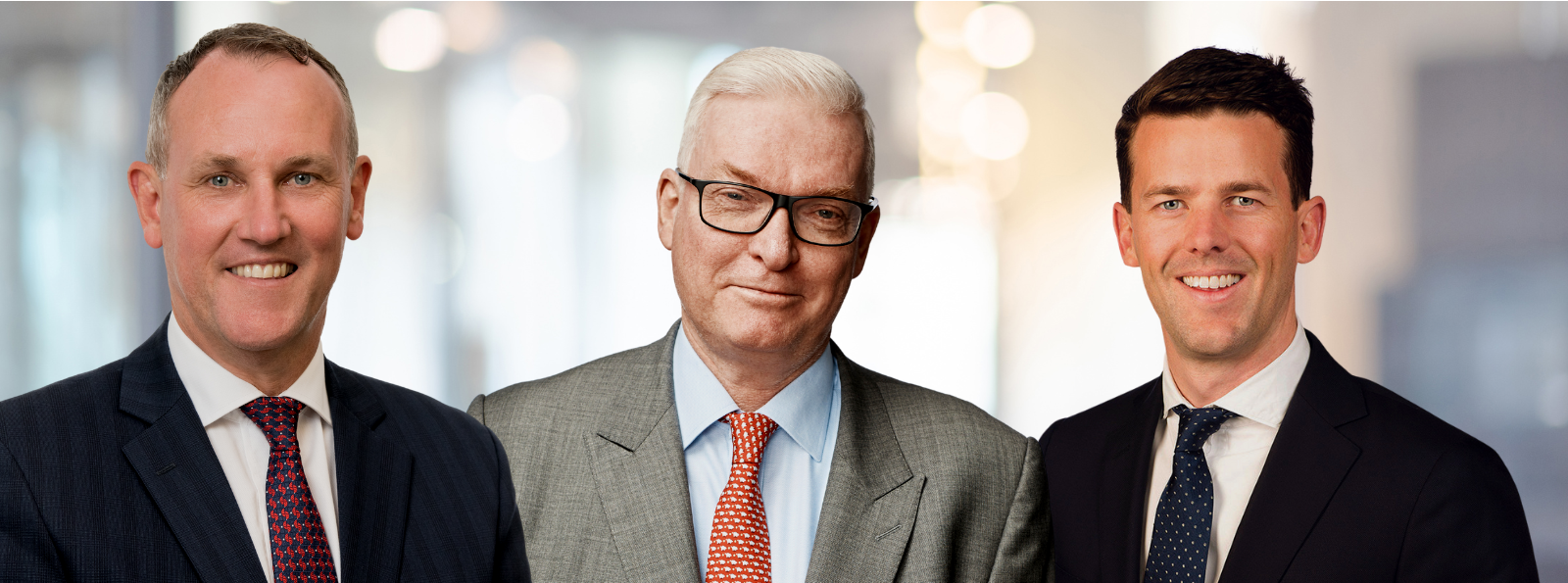Where these three fundies are finding income for the year ahead
Income-focused investors have hardly caught a break in recent times. First, extremely low interest rates forced investors to change their game. Now, rapidly rising interest rates combined with persistently high inflation have created new challenges. That is, focusing on fixed-income investments is not necessarily the answer either.
While many investors seek income, retirees in particular might be feeling frustrated with the current events. Taking on extra risk is not ideal, but their income needs are rising with the cost of living.
So, what is the solution for income?
The following three fund managers believe there are several approaches to consider:
- Dr Don Hamson, director, Plato Asset Management,
- Andrew Lockhart, managing partner, Metrics Credit Partners, and
- Charles Casey, analyst, Solaris Investment Management.
.png)
Looking towards dividends and buybacks to back up income
We’ve just come off an interesting half-year reporting season. Retailers had record sales and dividends but investors are still concerned. For example, JB Hi-Fi (ASX: JBH) is 25% ahead of where it was three years ago but investors were concerned that sales in January only rose 2% compared to the same period last year.
Plato's Dr Don Hamson notes that there was an 8.9% fall in dividends declared this time, a result of three of the biggest stocks cutting dividends due to falls in iron ore. More than $35 billion in dividends was declared.
He is already starting to see changes in the market for income and where it will be generated in the coming year.
“We’ve started to see changes in how companies are distributing as a result of the no buybacks rule. We expect to see more special dividends in the coming year. For example, AMPOL just paid a special dividend of 50c,” said Hamson.
He’s tipping 6% gross yield for Australian shares this year and notes that while interest rates haven’t kept pace with inflation, dividends have.
That said, he’s seeing a slightly elevated risk of dividend cuts which is still within the realm of normal risk.
Assuming a tougher environment in coming months, Hamson believes the big banks will continue to do well, even in a recession and points to Commonwealth Bank (ASX: CBA) having recently paid a 7% payout ratio with a $2.10 dividend. On the flip side, consumer discretionary stocks have a slightly increased risk of losses based on the outlook.
Focusing on total returns in assessing equities
Dividends are also important to Charles Casey of Solaris Investment Management, as a component of a total return. That is, Casey believes in looking at yield and growth as part of the biggest picture to avoid getting caught up by dividends. He is often wary of higher dividend payout ratios.
An example in practice is Harvey Norman (ASX: HVN). Casey points out that Harvey Norman is a stock they have avoided despite offering a high yield due to the their bottom up research and focus on capital. The company disappointed on market expectations of a 6% gross yield to be paid in February with a softer result, cut its dividend and lost 15% in capital in the process.
By contrast, three examples of companies Solaris likes are Suncorp (ASX: SUN), Coles (ASX: COL) and CSL (ASX: CSL) highlighting their focus on yield and growth when investing for income.
“Suncorp has immediate pricing power in its insurance business, increasing premium rates materially. Further it has the ability to reinvest its insurance float at higher yields and the pending transaction with ANZ to offload its sub scale banking operation will allow it to focus on its core insurance operations. Suncorp presents a strong yield and growth outlook,” said Casey.
Suncorp offers a 8.1% gross yield, while Coles offers a 5.1% gross yield.
“Margins were hurt during covid but there’s the potential for market share gains and margin expansion to support earnings as covid impacts pass. It has spent over $1bn in capex recently on new highly automated facilities in its supply chain including one facility in Brisbane with over $400m of robotics which is yet to come online and support margin expansion,” he said.
Market darling CSL only paid 1.6% gross yield but Casey is unworried by this, pointing to a 30% uptick in donations and the fact that CSL’s yield has grown to over 40% based on an original investment made in 2002. He also sees tremendous growth opportunities in CSL’s solid line-up of products and future pipeline. CSL highlights Solaris’s focus on not only just yield but growth in yield and capital which he emphasises is key to income investing.
Turning to stocks to be wary of in the coming market, Casey suggests an eye to balance sheets will be crucial. Over-leveraged stocks and those with too much excess inventory will find rising interest rates and the rising cost of living biting consumer spending a problem in coming months. By contrast, companies with strong balance sheets and pricing power are better positioned for survival.
Turning to alternatives could reduce volatility
Those investors struggling to keep up with inflation in listed fixed interest should turn their eyes to private debt according to Andrew Lockhart of Metrics Credit Partners.
“It’s primarily short-dated structures which can reset with rate rises and offers a superior position in the capital structure meaning reduced risk,” Lockhart says.
He notes in the coming market environment, topline revenue growth and earnings are likely to be challenged. As this affects corporate value, the risk tends to fall on shareholders rather than lenders, particularly when companies dilute their value to pay off debts with capital raisings. Two examples of this during the GFC were Ramsay Healthcare (ASX: RHC) and Rio Tinto (ASX: RIO), both of which used capital raising and share splits to pay off debts.
Even where a company defaults, Lockhart says this can be an opportunity.
“It allows us to go in and restructure and take a profit when the company turns the corner, despite the fact that a credit event can wipe out shareholder equity,” he says.
While investors may wonder if they need to look globally for private debt, Lockhart views the Australian market as holding the better outlook for investors. After all, it removes foreign currency risks and as our market is dominated by the big four banks, companies that can’t access these face paying a premium for loans. Australian regulations are also more protective of lenders than in other regions.
In the coming market, Lockhart recommends investors consider a company’s capacity to repay debts via consistent revenue streams and management control. He avoids cyclical investments such as agriculture or natural resources where events beyond management control typically influence earnings and losses.
Back to basics is still important
While income investors will likely need a more flexible approach in the market environment that lies ahead, there are a few things that remain consistent.
Hamson, Casey and Lockhart all speak to the basics – balance sheets, quality management, non-cyclical industries and pricing power – as things to watch now. But these aspects should always form part of a solid approach to investment analysis regardless of market cycles.
These will also be key to managing risk and volatility in a more uncertain market, as central banks continue to battle inflation using their key weapon: interest rates.
You can find out more about the strategies managed by Dr Don Hamson, Charles Casey and Andrew Lockhart below:



Never miss an insight
If you're not an existing Livewire subscriber you can sign up to get free access to investment ideas and strategies from Australia's leading investors.
You can follow my profile to stay up to date with other wires as they're published – don't forget to give them a “like”.
2 topics
9 stocks mentioned
3 funds mentioned
2 contributors mentioned

